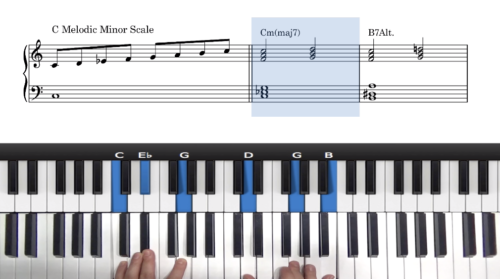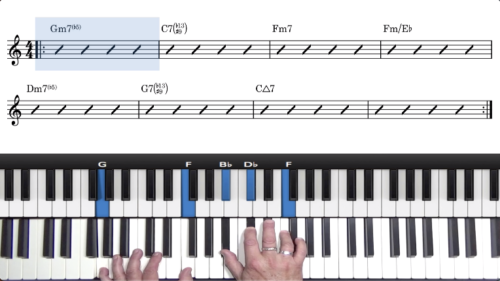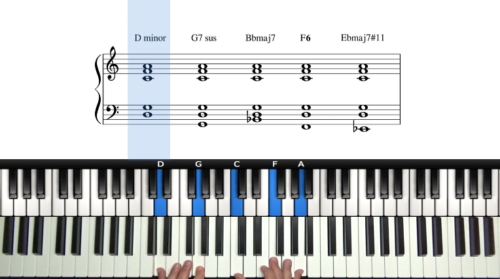Triad Questions
In this lesson, Jovino answers some questions on triads and explores some ideas on how to create complex sonorities from a simple base.
Beginning with simple major, minor, augmented and diminished triads, Jovino shows how the major and minor triads are usually sufficient for our needs and why the 2nd inversion is often the most useful.
Polytonal Harmony
From here he explores at playing triads over a root note and shows how, with just four notes, there are possibilities for complex yet simple harmony. Adding another triad to this stack to create polychords adds another layer and Jovino explains how this technique was used by composers such as Stravinsky and Scriabin.
Bringing it back to a jazz context, Jovino shows us how we can use triads to find new sounds within the context of dominant chords.
Lesson Downloads
-
Triad Options Lesson Notation File Type: pdf
-
Triad Pairs Lesson Notation File Type: pdf
-
Triad Options PDF File Type: pdf
-
Triad options for different chords File Type: pdf
Practice Tips
-
Many chords that we commonly use in jazz harmony can be broken down into a triad over a root or a pair of triads. Take a look at the chords in a tune that you know and see if you can identify triads either explicitly contained in each chord, or hinted at by each chord.
-
Playing different triads over a static bass note can be a simple and effective way to explore moving away from standard jazz harmony. Take a starting point, say Cmaj7, and see how different triads sound against it.
- Dealing with two triads at the same time can be tricky, so pick just a few combinations that interest you to begin with and work with those before gradually expanding your repertoire.






Seem like Lesson Notation download link isn’t right
Hi Vuong,
I have added 4 downloads files.
If you have any other questions let me know.
Cheers, Hayden